‘Not everybody has a price’: The troubling story of displacing the poor for the Olympic Games
The Olympic Games always seems a time to celebrate, a moment of national pride, and yet often poor communities are removed from their homes to make way for sporting venues. Bill Donahue tells the story of Rio and how one community fought back
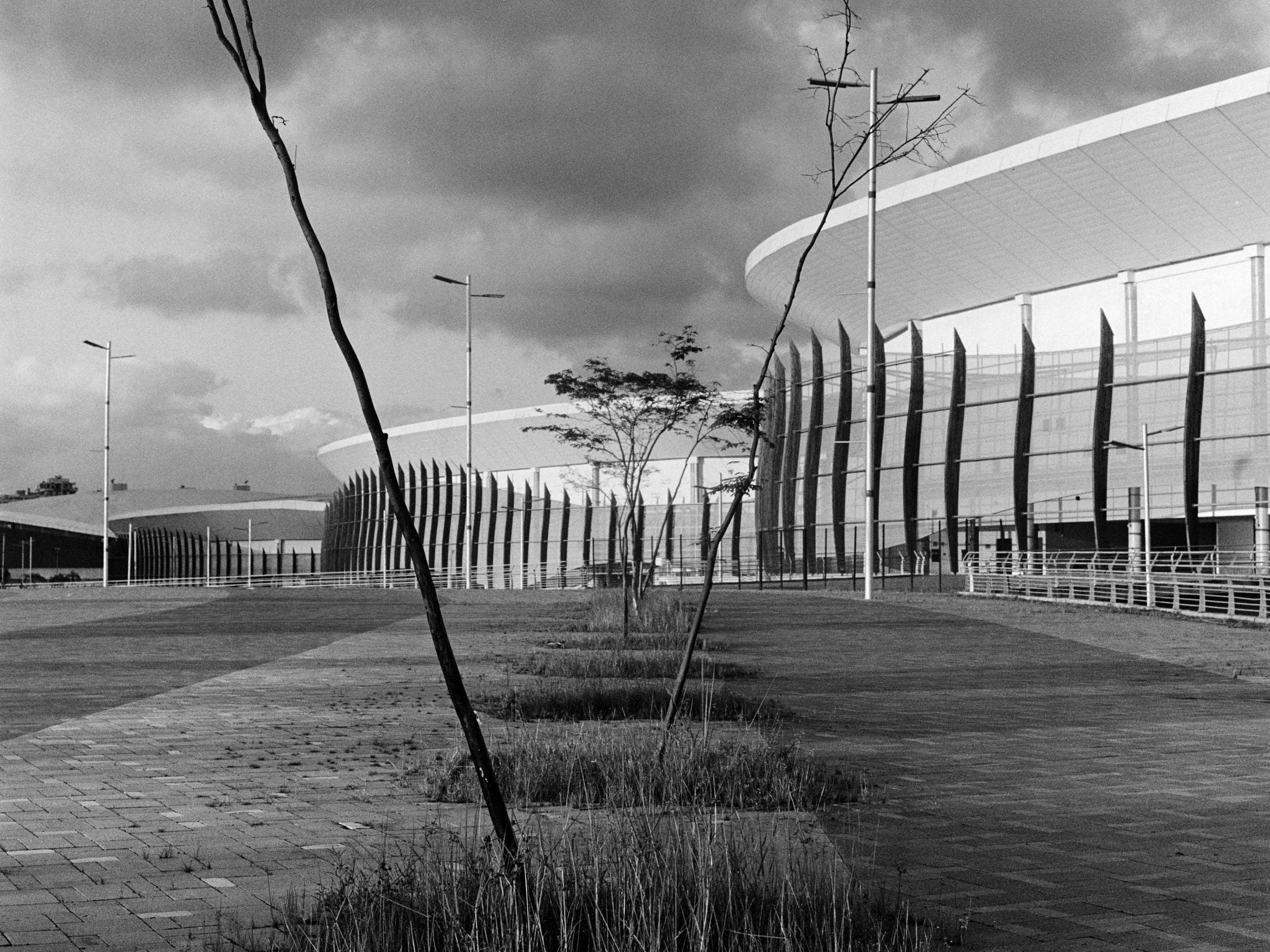
Your support helps us to tell the story
From reproductive rights to climate change to Big Tech, The Independent is on the ground when the story is developing. Whether it's investigating the financials of Elon Musk's pro-Trump PAC or producing our latest documentary, 'The A Word', which shines a light on the American women fighting for reproductive rights, we know how important it is to parse out the facts from the messaging.
At such a critical moment in US history, we need reporters on the ground. Your donation allows us to keep sending journalists to speak to both sides of the story.
The Independent is trusted by Americans across the entire political spectrum. And unlike many other quality news outlets, we choose not to lock Americans out of our reporting and analysis with paywalls. We believe quality journalism should be available to everyone, paid for by those who can afford it.
Your support makes all the difference.If the coronavirus pandemic had never happened, the Summer Olympics would be opening in Tokyo on 24 July. The Olympic torch would be making its way across Japan right now, and we would all be waiting for Tokyo’s National Stadium to erupt with happy pandemonium on the night of the Opening Ceremonies.
The stadium will be silent this summer, though. The Games won’t happen until next year, if they happen at all, and myriad news stories have detailed how the break from the Olympics’ quadrennial rhythm will wreak havoc on the lives of athletes, coaches and sponsors, as well as the Games’ organisers and hosts. The coverage has, however, overlooked a whole category of people whose lives are thrown into chaos by the Olympics every four years: poor people who find themselves living in the wrong place, on land that the Games need for stadiums and parking lots. Poor people who are, per Olympic tradition, evicted and sent packing into a difficult new life.
In the lead-up to the 1988 Games, in Seoul, 720,000 people were forcibly moved, according to the Geneva-based Centre on Housing Rights and Evictions. Before the 2008 Games, in Beijing, the centre has reported, 1.5 million Chinese were shunted out of the way; resisters were handed one-year “re-education through labour” sentences.
You could tell this story in either Seoul or Beijing, or in London, where a low-income housing development, Clays Lane, was erased to make way for the 2012 Games. But I travelled instead to the western fringes of Rio de Janeiro, because it’s there I knew I’d find a tale of Olympics displacement that was not only fraught and heartbreaking, but also inspiring.
The date is 3 June, 2015. Rio is readying to host the 2016 Olympics, and at the moment, on a warm, overcast morning, a bulldozer is idling on a dusty dirt road on the edge of a small favela, or improvised community: Vila Autódromo, population 700 families. The dozer is there because the Olympics need wide-open land on which to build stadiums, parking lots, swimming pools and media centres. And Vila Autódromo is in the way. Brazil’s second-largest city is midstream in its campaign to level the favela – every last house.
The dozer sits at the edge of the neighbourhood, surrounded by camouflage-clad officers from Rio’s Municipal Guard. Facing it is a tightly clumped crowd of 50 protesters. These Vila Autódromo residents do not want to surrender their homes to the Olympics, and their story is best encapsulated by a wiry woman, just 4 ft 11 ins tall, linking arms in a human chain with her neighbours. Maria da Penha, 50, grew up in a hilltop shack in Rio’s biggest favela, Rocinha, population 100,000. Drug dealers roamed the narrow streets near her home, and killings were commonplace. At age eight, Penha began working in a bar as a dishwasher. Later, she earned her keep as a street vendor, a maid and a snack shop clerk. She dreamed of leaving Rocinha and its crowded, violence-ridden steep slopes. She saved her money and finally, in 1994, when she was married with a small child, her family bought a little less than a tenth of an acre in Vila Autódromo.
Vila was, relatively speaking, the countryside. The community looked out onto a large blue lagoon. There were coconut and banana and mango trees, and Penha, a devout Catholic, had enough room on her property to loan out three rooms to Vila Autódromo’s church, São José, for catechism classes. Vila Autódromo, in contrast to many of the 1,000-plus favelas in Rio, was devoid of gangs and drug traffickers. “I felt at peace,” Penha told me, “like I was a daughter of the land.”
Penha loved Vila so much that in time she became a pithy spokeswoman for the favela’s Olympics resistance movement. In response to the city’s offer to buy out Vila homeowners, she said, “Not everybody has a price.” Later, in almost biblical tones, she would say, “We came here to this land to share, not to sell it. Who did the first human who sold his land buy it from?”
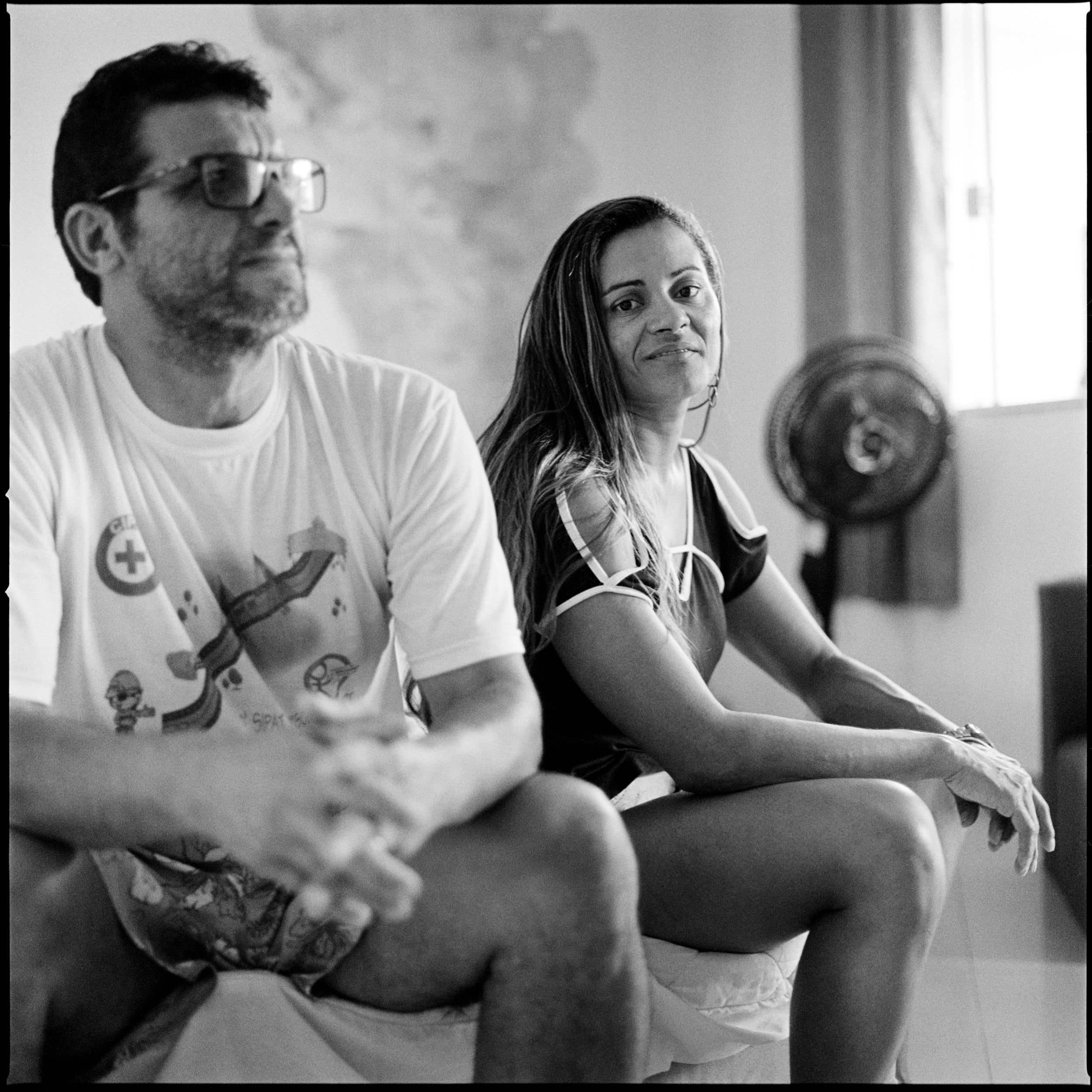
Did the officers from the Municipal Guard know of Penha’s leadership role? Most likely they did. When they raised their billy clubs that June day they broke her nose and bloodied her face. It was easy work, this brisk clubbing of a 95-pound woman, and soon the guard rained rubber bullets and tear gas on the crowd.
If it had been any other Olympics, the rest of the story would have been almost too predictable to tell. Poor people have very little leverage against the International Olympic Committee, which oversees the Games and earned a total of $5.7bn (£4.5bn) from the 2014 and 2016 Olympics. The city of Rio kept levelling Vila Autódromo that year. Still, after the police beating, a photograph began to circulate – of Penha with half her face covered in blood.
Soon, “We are all Dona Penha” became a chant galvanizing academics and activists in Rio. Penha was featured in The Washington Post and the Guardian and on the BBC’s website. In discussing the Olympics on “Only a Game,” a programme aired on US radio station NPR, she said of Rio’s administrators, “They destroyed my life, my dream.” Nine months after police broke her nose, the city destroyed her home. On the same day – 8 March, 2016, International Women’s Day – the state of Rio de Janeiro’s legislature recognised her, along with nine other women, for devotion to social justice. She helped inspire a broader movement.
For the first time, anti-Olympics activists from around the globe are now joining to stand against the Games. Their slogan is “No Olympics anywhere”, and after 200 of them met last summer in Tokyo, one attendee – American Jules Boykoff, who teaches politics and government at Pacific University in Oregon – summed up the ills of the Olympics in a neat list: “overspending, militarisation of police, citizen displacement, greenwashing and corruption”, Boykoff wrote in a 2019 Los Angeles Times op-ed.
More recently, Boykoff has seized on the postponement of the Tokyo Games to heighten his rhetoric. “If the IOC is not willing to create an ethics committee with real teeth,” he wrote for NBC News’s opinion website in late March, “... then it should probably be abolished and the international community should work to find a different way to organise the competition.”
Maria da Penha has disappeared from the headlines, but the Olympics continue to resonate in her life and in the lives of her onetime neighbours. So late last winter, just before quarantine set in, I travelled to Rio to meet these folks, because it’s arguable that no one understands the storied “Olympic spirit” as well as the people from Vila Autódromo.
I stepped into the Catholic church in Vila Autódromo on a Sunday morning at 8:30 as the pews were filling. Yes, the favela’s church is still standing, along with one other pre-2016 building, and roughly 20 families have continued to live in the neighbourhood, even after its demolition. They resisted the city of Rio until it had no choice but to build them each a new home, so that now, lining a dead-end street, there are 20 identical small white concrete houses, each one fronted by a white iron fence and a narrow white sidewalk.
So much of Vila Autódromo’s essence has been drained away, though. Where there was once a higgledy-piggledy array of brick-and-stucco houses, and chickens and horses and goats running in the streets, there is only a suburban blandness. A bakery, beloved for its breaded chicken, is gone, as is the hair salon in one resident’s home and several restaurants and churches.
Sitting in my pew, I began to wonder whether Vila Autódromo had won or lost in its fight against Olympics removal. Yes, the favelados attained unprecedented concessions from the city, but their village has been gutted, and in talking about the Olympics’ legacy Penha has often been dire. “The majority of our companions, from our fight and from the community, feel very distressed,” she said last year at an academic summit for urbanists in Rio. “The majority of our elderly have died, and we see people who used to live in our communities dying of strokes at the age of 58.”
Eventually, about 25 current and former Vila Autódromo residents flowed into the church to wait for the priest. And as everyone milled near the door, chatting, Penha, now 54, hurried over the concrete floors.
Penha and her husband, Luiz Claudio, a personal trainer at a gym, live in a white cube a block from the church and serve as its caretakers amid challenging circumstances. A few weeks ago, the gold chalice on the altar was stolen, along with the door on the church’s bathroom. “There’s more crime here now that they put the new highways in for the Olympics,” Penha told me, apologetically. (She spoke, as did nearly everyone I interviewed, in Portuguese, through an interpreter.) She arranged the after-church cookies, then rushed home to fetch the printed Mass programmes and to check on her frail mother, who lives with her and Claudio.
When Penha at last settled into her pew just seconds before the priest’s arrival, she knelt and ducked her head low, clasping her bony hands in prayer. Earlier, Penha told me that religious faith had carried her through the Olympics protests. Now, in the church, I was aware of a broader, secular faith at work. Vila Autódromo’s former residents still visit the favela because they never stopped believing in the place they call home. And the beauty of this morning’s service lay in how much it is theirs.
At the end of the Mass, the priest summoned everyone from the community to come forward. Then, standing with their backs to the altar, they sang as a chorus, all 25 of them: Não temas, segue adiante. Fear not, carry on.
Of the 700 families who once inhabited Vila, more than 300 moved, between 2014 and 2016, to a nearby Rio public housing complex. Home to 900 units and specially built for Olympics removals, Parque Carioca is either an isle of ultramodern luxury or a scary, crime-ridden dumping ground for Rio’s forgotten, depending on your source.
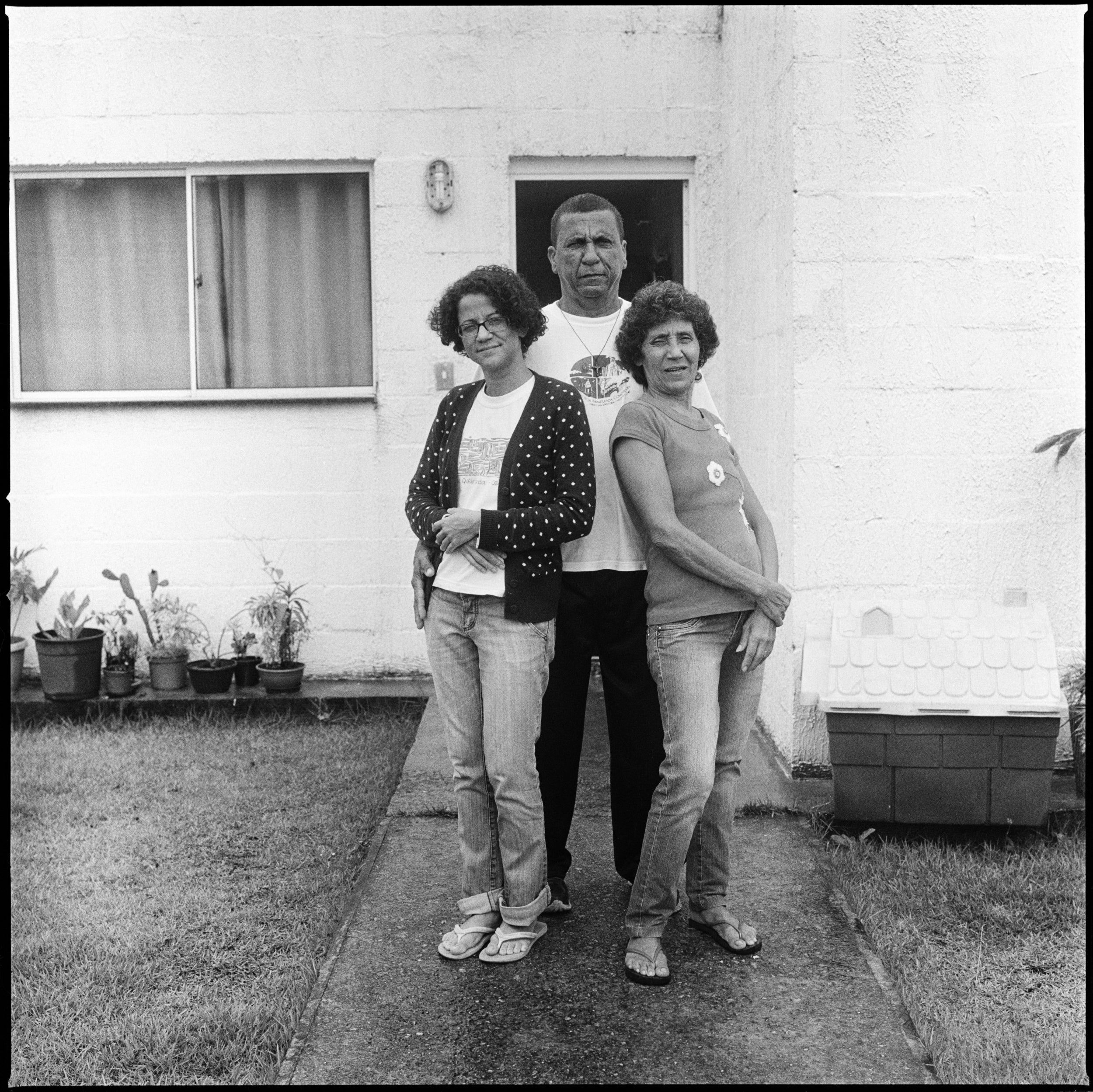
Back in 2014, when the city was readying to level Vila Autódromo, it put together dazzling videos extolling the lavish creature comforts of Parque Carioca. The films captured children frolicking in Parque’s pool and lingered on fluffed bed pillows as the city offered the favelados a deal: either they could take a condo in Parque Carioca in exchange for their Vila home or the cash equivalent, often under $20,000 (£16,000). There was, of course, a third path. It involved fighting the city, as Penha did. But in a violent metropolis like Rio, where over 1,800 people were killed by police last year, fighting can be terrifying. The average Vila resident worked with the city. Many now regret having done so.
In January, Olympic Park was shuttered by a federal judge worried about safety. His ruling described the place as “progressively battered by the lack of care” and “ready for tragedies”.
One afternoon I visited 43-year-old Carmelia Marques at Parque Carioca, where she has lived, along with her husband and two kids, since leaving their home in Vila in 2014. The housing complex is just a mile away as the crow flies. By car, though, it’s three miles and a long psychic journey. You travel wide, busy avenues lined with shopping malls, climb a dead-end street and pass through a high chain-link fence and then, finally, through a large, sweltering and unshaded parking lot.
There are four “lodges” at Parque Carioca, each home to several buildings and encased in its own high fence. I found Marques in the office of Lodge 3, where she works as the administrative secretary. Perched in a high black-vinyl swivel chair, she talked about how unhappy she was and focused complaints on other Lodge 3 residents. “They throw trash out the window,” she said. “They don’t know how to live in a building with lots of other people. They think they’re still living in a favela, and they make noise all night. They’re drug addicts, and so for the past six years I’ve gone many nights with no sleep at all.
“I was adapted to one way of life in Vila Autódromo,” Marques said, “and my body’s responded to the change.” She rose now and held out her arm to reveal a black mark on the inside of her biceps. “Bruises appear on my body,” she said. “After I came here, I was diagnosed with diabetes and hypertension. Soon the doctor will do an exam to see if I have a thyroid problem.”
Marques wants to leave Parque Carioca, but she learned after moving in that, per her contract with the city, she is being granted ownership of her two-bedroom condo in 120 monthly increments. She is not allowed to sell the place until 2024, and subletting is forbidden.
The lagoon is still there, but residents say that since construction for the Olympics began, it’s been too polluted to fish there. The view from its western shore, meanwhile, is desolate
Meanwhile, there’s another stressor at Parque, and in the Lodge 3 office it’s mentioned only obliquely, in hushed tones. “If anyone wants to use the swimming pool,” one resident said, stopping by to pay a bill, “they’ll need permission from the big guy on top.”
Militias including former police officers, soldiers and firefighters have increasingly rained terror on Rio in recent years. Originally formed to combat drug traffickers, the militias now control areas where 2 million Rio residents live. At Parque the militia’s “big guy” is a 46-year-old imprisoned ex-police officer named Orlando Oliveira de Araújo. The Rio newspapers have regularly made reference to Orlando’s henchmen – who show up in Brazilian crime stories involving murder and extortion – and have a presence at Parque Carioca. All the while, Orlando’s militia disturbs the peace at Parque by embracing a violence- and profanity-laced form of dance music that serves as the soundtrack to militia activity throughout Brazil. “Every weekend,” according to Disque Denuncia, a Rio nonprofit that runs a CrimeStoppers-like hotline, referring to 2019, “the militia promoted loud baile funk parties.”
Pentecostal minister Antonio Marcos, who ran a church in Vila Autódromo for many years, now has a small church in a mini-mall near Parque Carioca’s entry gate. In sermons, I learned, the pastor speaks frequently of his derelict youth as a gangster drug dealer. In Vila, though, he was, apparently, a relatively mild neighbour. I heard only one complaint about him while I was in Rio. A former neighbour said that he was very acquiescent to the city – that he left Vila early, without fighting, and thereby encouraged his church’s 20 or so regulars to do the same. But whenever I asked people about him, they were too scared to talk.
I tried to interview Marcos. At his church, the sign on the door identified him as an Assembly of God minister who held services on Sundays, Tuesdays and Thursdays, but his neighbours hadn’t seen him for weeks. I called him, and he consented to meet, but then a few hours before our appointment, he texted to cancel. “I took the wrong medicine,” he wrote, cryptically. “I can’t move.” The next day, Marcos again promised to meet me, and we were supposed to convene at his home. Then, just before we reached his neighbourhood, he cancelled again, texting, “I’m in a meeting I can’t get out of.”
Vila Autódromo was demolished to make room for a winding quarter-mile street along with a portion of the parking lot the street feeds to. Olympic Way only skirts the edge of the favela-become-subdivision, though, and the lot, while vast, leaves wide swaths of Vila untouched, so that the favela is now largely a tangle of weeds and high grass scattered with the concrete rubble remaining from the destruction of 700 homes.
The lagoon is still there, but residents say that since construction for the Olympics began, it’s been too polluted to fish there. The view from its western shore, meanwhile, is desolate. The parking lot is almost always empty and pocked with puddles and sprouting weeds. The half-dozen arenas nearby, built for Olympic handball, cycling, fencing and basketball, lured 700,000 visitors for the Rock in Rio music festival over two weekends in September and October, but otherwise they’ve scarcely been used. It was never clear what their purpose would be after the Games, and Brazil has been in an economic slump since 2014.
In January, Olympic Park was shuttered by a federal judge worried about safety. His ruling described the place as “progressively battered by the lack of care” and “ready for tragedies”.
After the park reopened – briefly, pre-Covid-19 – I ventured inside one morning. The brick paving stones underfoot were loose. They teetered; they clattered and scraped. The metal on the footbridges was rusty and peeling paint. The signs pointing to closed areas of the park – the medical post, for instance – had been hastily covered with masking tape.
But the wasteland I was visiting had been a wasteland once before. Back in the mid-1960s, the area that’s now home to Vila Autódromo and the stadiums was an uninhabitable, bug-infested swamp. Eventually, it was piled with infill dirt to create solid land that in 1977 became home to the Nelson Piquet International Autódromo, a Formula One racetrack. The track’s workers settled Vila Autódromo nearby alongside fishermen who plied the lagoon.
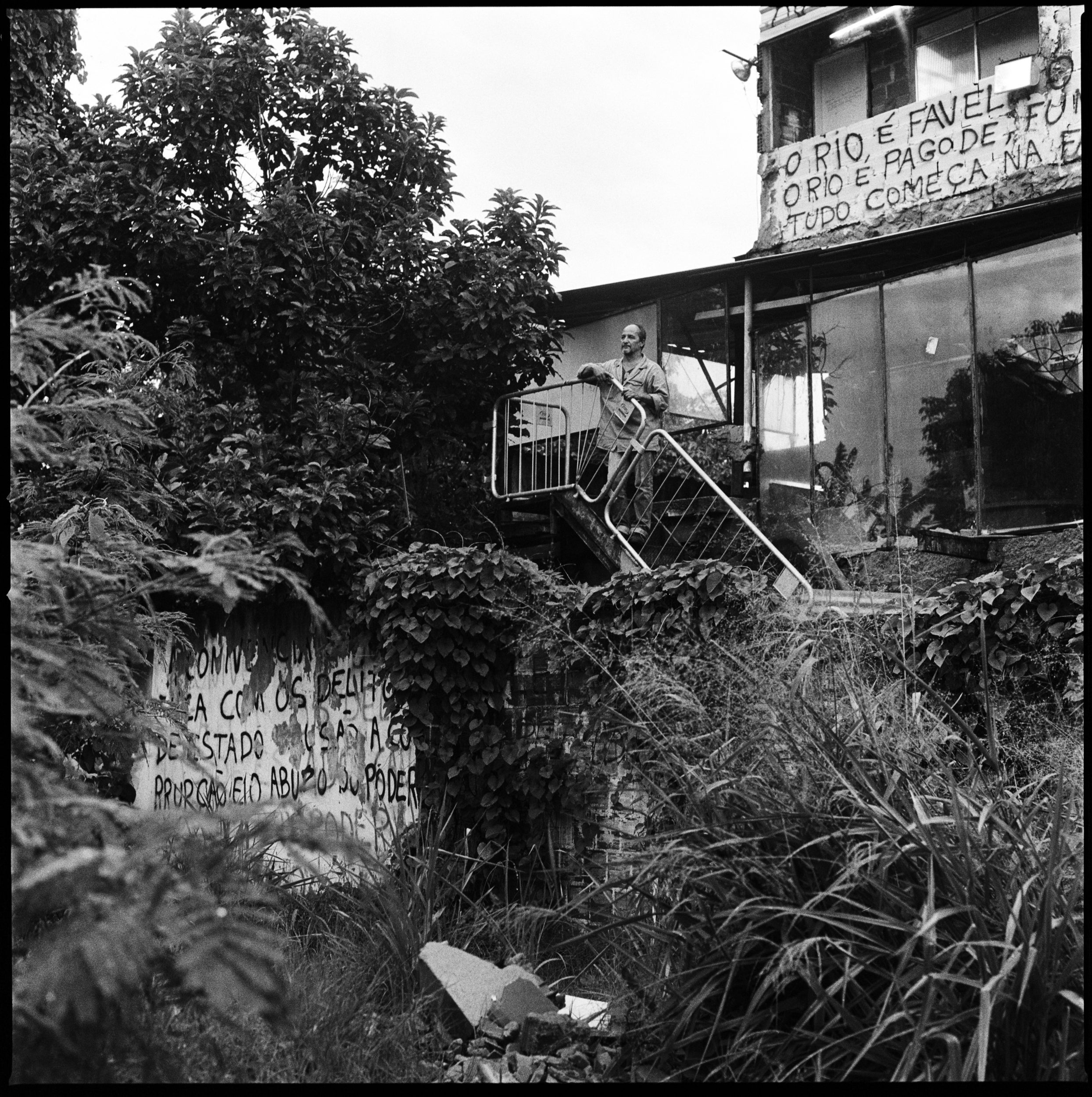
From the beginning, Vila was protected by Brazil’s squatters’ rights laws. But that afforded residents little peace in 1993 when the favela’s foremost antagonist arrived on the scene. Eduardo Paes was just 23 years old that year and a fresh-faced law school graduate, but he became the subprefeito (essentially the borough president) of Rio’s West Zone, which is dominated by an affluent suburb awash in gated communities and mega-malls: Barra da Tijuca. On such a moneyed landscape, favelas were, in Paes’s view, “invasions”, according to The Atlantic magazine. He declared war on them, pronouncing himself “the sheriff of Barra”. He personally oversaw the bulldozing of at least one favela, calling such demolitions a “defence of law and order”, and there was speculation that his austerity encompassed violence. In 1993, the president of Vila’s resident association – José Alves de Souza, better known as Tenório – was executed, and a leading Rio newspaper, Jornal do Brasil, aired accusations that Paes was behind the killing. Later, in 1996, he gave 80 Vila Autódromo homeowners five days to leave their homes and sent bulldozers to the favela.
Paes denied involvement in Tenório’s killing, and he was never prosecuted. Vila’s residents, meanwhile, were able to defeat his evacuation order, obtaining a court injunction against removal. In 1994, a Paes opponent, Rio Governor Leonel Brizola, gave 354 Vila homeowners a 99-year title to their land. But it afforded them only a respite. In 2009, after stints as a Rio city councillor and a Brazilian congressman, Paes became the mayor of Rio and an integral player in the city’s bid for the Olympics.
At first, Mayor Paes was an ostensible champion of the poor. In 2010, citing “Olympic inspiration”, he rolled out an ambitious programme, Morar Carioca, which promised to uplift the city’s favelas as Rio reinvented itself for the Games. In a 2012 TED Talk, he said, “Favelas are not always a problem. Favelas can sometimes really be a solution, if you deal with them, if you put public policy inside of favelas.” He vowed that he’d have Rio’s favelas “completely urbanised by 2020”.
But before Paes made good on all his promises, he set the bulldozers on Vila Autódromo again and meanwhile worked with developers with deep roots in Rio’s West Zone. The largest contracts for Olympic Park went to the Brazilian construction firm Odebrecht, whose chief executive, Marcelo Odebrecht, is now serving a 19-year sentence for paying bribes to politicians.
Paes was not implicated in those bribes, but this March, in a Brazil court, the nation’s Federal Public Ministry accused him of illegally restricting the construction bidding process for several Olympics facilities, among them the $129m Deodoro Stadium, used for rugby matches and the shooting and equestrian events involved in the modern pentathlon.
Why would I ever leave? Animals have children and they protect their nests. This is the most basic instinct we have – to protect where we live
Today, at age 50, Paes is campaigning to get re-elected as Rio’s mayor. I tried to get a sit-down interview with him. He agreed to meet me, then cancelled. Later, over WhatsApp, I asked him some hard questions about Vila Autódromo, touching on his 90s-era focus on the favela, the police beating of Penha, and the killing of Tenório. His response was brief and he did not engage my question on Tenório. “From what I see,” he wrote, “your point of view is made. Not much I can do to change.”
But it would be unwise to dwell on Paes, for a callous elitism has arguably pervaded the modern Olympics since their inception in 1896. The first Games were the brainchild of a French baron, Pierre de Coubertin, who conceived the Olympics as an insider’s club for privileged men. Women, he felt, were best suited for “applause”, and the working class was likewise excluded by a “mechanics clause” that disqualified manual labourers from competing, supposedly because they held an unfair physical advantage. The first International Olympic Committee included two counts as well as a lord, and Baron de Coubertin seemed to revel in the group’s aristocratic exclusivity. “We are not elected,” he said, proudly. “We are self-recruiting, and our terms of office are unlimited. Is there anything else that could irritate the public more?”
The first modern Olympic Games were held in Athens, in a marble stadium whose lavish renovation was financed by a wealthy Greek businessman, George Averoff. The Opening Ceremonies drew 50,000 people, which many believe made it the largest peaceful gathering since antiquity. And a standard was set: the Olympics need to be grandiose.
In the decades that followed, the IOC increasingly leaned on taxpayers in host cities to fund its travelling extravaganza – and faced opposition. In the lead-up to the 1932 Olympics, held in Los Angeles at the height of the Great Depression, after California voters affirmed a bond act earmarking $1m for the Games, protesters descended on Sacramento bearing placards reading, “Groceries Not Games!”
The revolt against the 1968 Olympics, in Mexico City, was more clamorous. Thousands of student protesters gathered in a public square, decrying their governor’s funding of stadiums rather than social programmes. Federal security forces opened fire on them, killing at least 30 people.
The IOC’s thirst for public funding didn’t attain full flower until 1976, though. In advance of that year’s Games, held in Montreal just as companies such as Adidas, Coca-Cola and McDonald’s were introducing lavish corporate sponsorship to sports, Montreal’s mayor, Jean Drapeau, divined an opportunity to put his city on the world’s economic and touristic map by hosting a low-budget Olympics that would, he said, cost only $125m. In the end, the Montreal Olympics cost $1.5bn and burdened taxpayers with a debt that was not paid off until 2006. Montreal’s Olympic Stadium became known as “The Big Owe.”
Displacement became a significant part of the Olympics equation in 1988 when South Korea’s president, Chun Doo Hwan, a onetime military general, kicked nearly three-quarters of a million poor people out of their Seoul neighbourhood, Sanggyedong, even as protesters lay prone beneath construction cranes. The Beijing Games, in 2008, upped the ante with its 1.5 million removals. Still, at the Closing Ceremonies in Beijing, IOC president Jacques Rogge celebrated a “truly exceptional Games”.
Olympics scholar Jules Boykoff contends the IOC tramples on poor people because it is “still a very elitist organisation”. Currently, the group’s committee members include over a dozen royals hailing from nations throughout Europe and Asia. As Boykoff sees it, “These are people wealthy enough to treat Olympic stadiums as though they’re single-use coffee cups.”
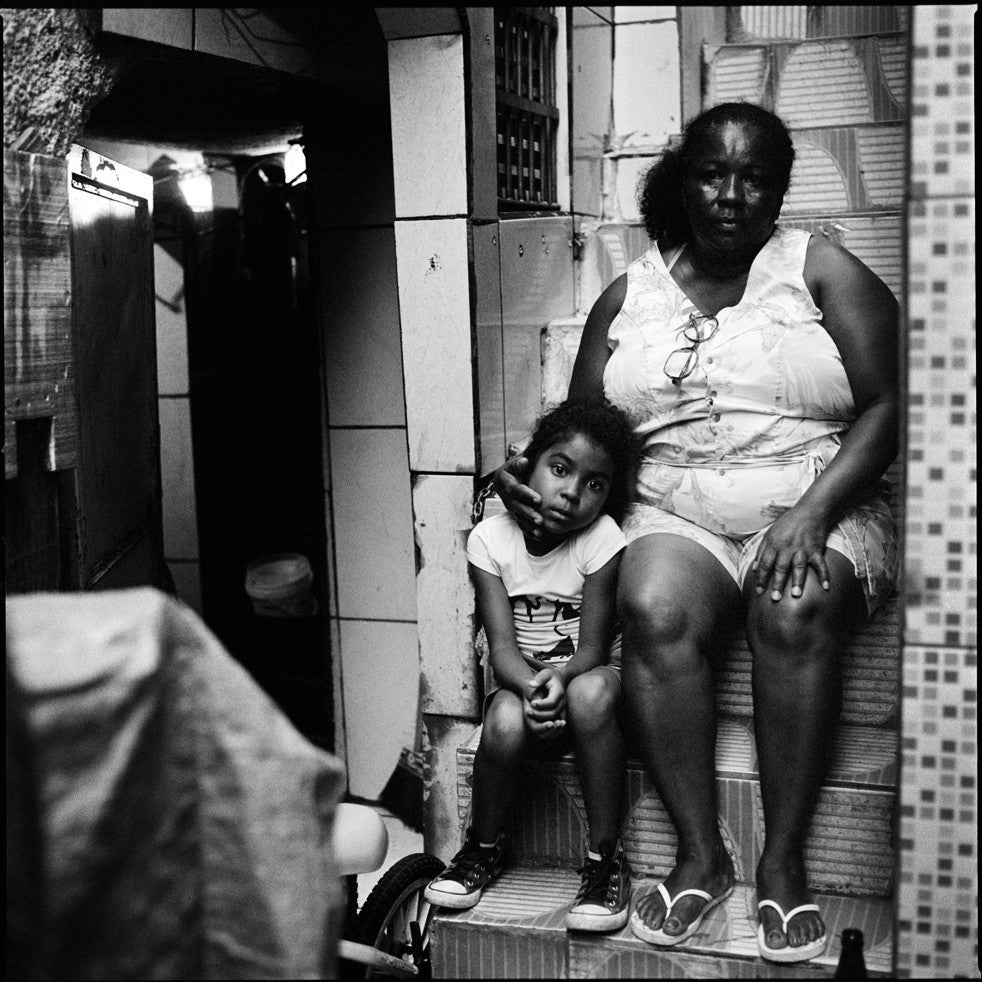
In Rio, he argues, the IOC “practised willful gullibility”. When Brazilian politicians promised to “help poor people”, Boykoff says, “that was standard lying from the Olympic hymnal”.
After Mass on a Sunday morning, I strolled over to Penha’s house. For many years, she has hosted regular Sunday luncheons open to all comers. That day, about 15 people were gathered in her living room. Among them was a trio of Brazilian filmmakers who’ve shot in Vila, and Penha’s mother, Antonia, a very old white-haired woman who perched on the couch in a bright house dress. She didn’t speak a word, but for minutes she smiled at me, amiably, serenely, somehow included in the fun as the guests laughed and shared photos. Penha kept scurrying in and out of the kitchen, bearing steaming dishes of food: stewed beef, rice and beans and farofa, a toasted cassava dish.
There was confusion over my first name, which proved difficult for the Brazilians to pronounce. “Is it Beel,” someone asked, “or Bee-lee?” Penha, for some reason, found this hilarious. “Oh!” she said. “It doesn’t matter what your name is! All you need is love.” Laughing, she wrapped her arms around her shoulders to signal we’re all snugly together here, loved. Then we sat and ate.
Afterward, Penha insisted on doing the dishes herself. As I sat in the living room, waiting to talk to her, I noticed that above her couch was a certificate of recognition personally signed for her and Claudio by Pope Francis. My mind drifted back to what she had said earlier when I asked her to name her favourite Bible story. “The loaves and the fishes,” she said. “That was a miracle, and it symbolises what happened here in Vila Autódromo. In the beginning, nobody thought it was possible for us to fight the removals. But I remained faithful. I remained a believer. We didn’t get exactly what we wanted, but at least we were able to stay.”
Since the 2016 Olympics, Penha has devoted all her time to activism and caring for her mum. She has worked with other favelas facing removal and circulated a video made this year in which she calls on “Olympic committee officials and Japanese authorities” to respect the right to housing. “Everyone,” she said, “has the right to housing with dignity”.
Penha never told me herself, but she is godmother to at least a dozen children born in Vila Autódromo. And during my time there I came to think of her as the force that binds the neighbourhood. She is resolute – determined to hope and pray for a gentle world until everyone that she loves lives in that world.
When I wrote to the IOC, asking about Vila Autódromo’s travails, it responded with a written statement stressing that it was not to blame. “The displacement,” it said, “was not dictated by the needs related to the hosting of the Olympic Games. This was a decision of the city [of Rio] itself and the IOC made it clear at the time that these displacements were not needed for the Games to take place.”
The statement went on to allude to Parque Carioca, saying, “Approximately 420 families were relocated to apartment buildings located 1.5km from Vila Autódromo, in an area benefiting from public services, such as sanitation. Such services did not exist in Vila Autódromo. ... For the families that wanted to stay, their voices were heard and the promises that they would be able to stay were kept.”
A question on the IOC’s Candidate Cities Questionnaire, revised in September 2015 after many Vila Autódromo protests, asks prospective hosts to “Identify any projects required for the Games that may require displacement of existing communities and/or businesses and explain why.” For the Tokyo Olympics, only about 300 people have been displaced, according to anti-Games activists.
Still, the outcry against Olympic construction is now so strong that fewer major cities are willing to play host. Before Paris was chosen as the site of the 2024 Games, Budapest, Hamburg, Rome and Boston all withdrew their bids after locals voiced opposition. The 2026 Winter Olympics have found a home in Milan, but only after voters in Canada and Switzerland nixed a host role.
In Vila Autódromo, of course, the damage is already done, and sometimes, visiting the place, I felt as though I was stepping into a ruin. The crumbling foundations of many houses remain, and the weeds keep growing around them. One dwelling is still standing, though, in the high grass a few yards from where the bakery once sat. It belongs to Delmo de Oliveira, a 55-year-old construction contractor, and it is sharply different from Vila Autódromo’s tidy rectilinear white cube homes.
Oliveira’s house is built of brick, concrete and corrugated tin. When I visited, the ground floor was still without a wall on one side, and a sidewalk guardrail had been bent to form a makeshift fence around the gaping hole. One wall was graffitied with poetry. “Rio is favelas,” the wall read before noting art forms that flourish in the city’s informal communities. “Rio is samba. Rio is pagode, funk and rap. Everything begins in the favela. We’re together.”
The house is still there because Oliveira waged legal war against the city with the same focus that he brought, long ago, to his clandestine attacks on Brazil’s 80s-era military regime. Back then, Oliveira intimated, he resorted to violence. “Did you throw Molotov cocktails?” I asked him.
“A little more than that,” he said. “I can’t tell you.”
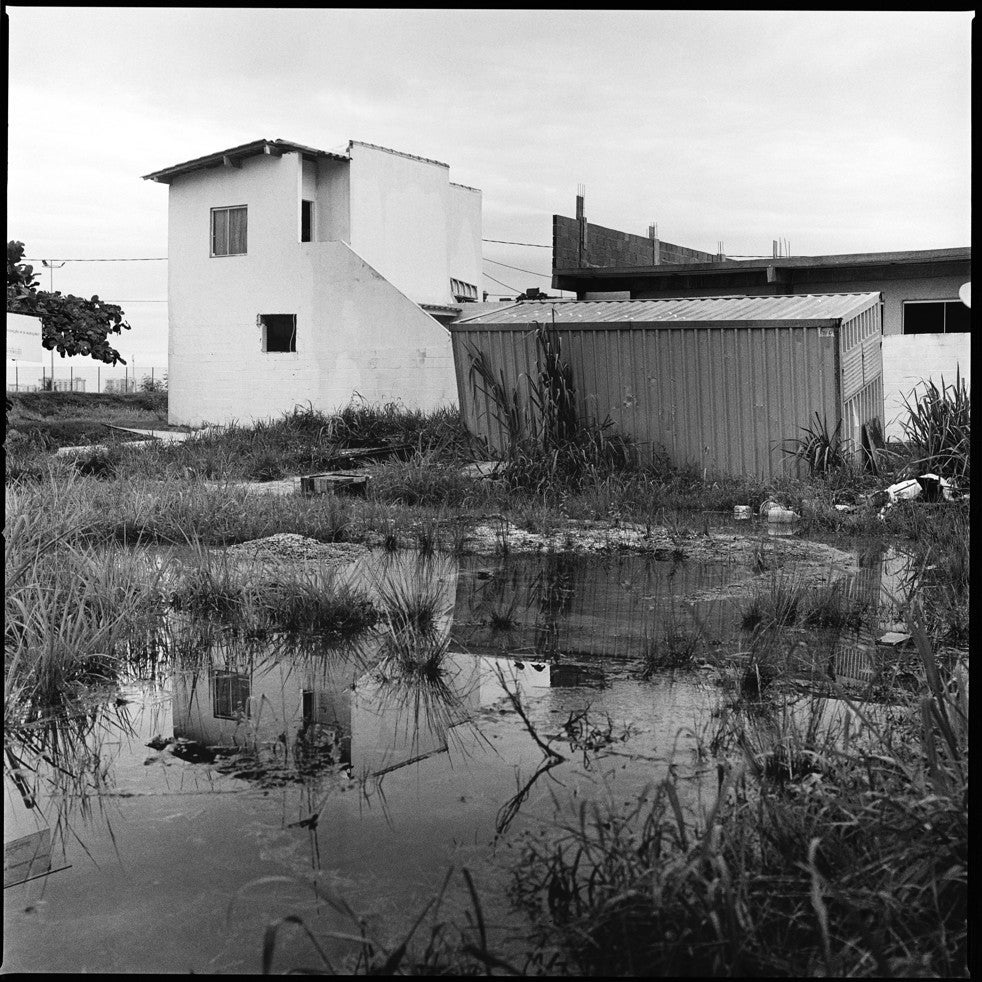
In my eyes, Oliveira’s house is a work of art. It’s an organic and human assertion against power – against the IOC and also against Rio’s city government. It’s tragic that it sits amid rubble, in a community that has lost most of its residents, but simply by holding their ground and staying on their turf even after the Olympics juggernaut folded its tents, the remaining residents won a bittersweet victory. They’d retained their home, and they were still fighting – fighting to keep their favela’s spirit alive.
During a lashing rainstorm, I followed Oliveira as he climbed the rickety stairs to the third level of his house. We passed the second-floor living space occupied by his son’s family, then reached Oliveira’s apartment, a cluttered aerie bathed in the light coming in from long banks of high windows. The interior mortar work was rushed, so large patches of grey splotched the brick. An electrical wire squiggled in through the window, then over the sink at eye height.
Oliveira is a compact, muscular man who looks like Vincent van Gogh, thanks to his close-cropped beard, his receding hairline and his intent, serious gaze. He told me that he’d moved to Vila Autódromo in 1992, when the favela was small, and that during his time there he’s planted thousands of trees. He procured young trees in the woods nearby, he said, on the flanks of Rio’s tallest mountain, Pico da Pedra Branca. Eventually, he led me over to an open window to show me the mountain.
We were high above Vila Autódromo now – higher, even, than the church bell tower, and I could see almost everything: the lagoon, the curving black stripe of Olympic Way, the edge of the parking lot that once was a neighbourhood. The green trees and the brush sprouting in Vila’s vacant, rubble-strewn lots swayed in the wind of the rainstorm. The small white cube-shaped houses were nearby, on their straight dead-end street. I asked Oliveira why he’d decided to stay here and fight.
When he answered, he spoke, I felt, for all the people who had stayed at Vila Autódromo and fought and also for those who had left but still kept the favela in their hearts. He spoke, perhaps, for anyone who has ever loved a place on this Earth. First, though, he corrected me.
“No,” he said, shaking his finger at me. “Let’s ask the right question: Why would I ever leave? Animals have children and they protect their nests. This is the most basic instinct we have – to protect where we live. I just can’t understand how anyone can leave where they live to start a new life somewhere else. I planted my trees here. I’m staying.”
© The Washington Post
Join our commenting forum
Join thought-provoking conversations, follow other Independent readers and see their replies
Comments